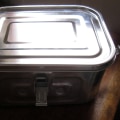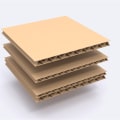When it comes to packing and shipping valuable items, foam padding inside crates is an essential feature for keeping items safe during transit. But did you know that foam padding can also be customized to meet your individual needs? Whether you need extra protection for fragile items or want to add a decorative touch to your packaging, there are a variety of customization options available. In this article, we will explore the customization options and additional features of foam padding inside crates. Foam padding is made from a variety of materials, each with its own unique properties. The most common types include polyurethane foam, cross-linked polyethylene foam, and memory foam.
Polyurethane foam is the most economical option and provides good cushioning and insulation. Cross-linked polyethylene foam is more durable than polyurethane foam and provides better insulation against temperature changes. Memory foam is the most expensive option but offers superior cushioning and insulation. When it comes to benefits, foam padding inside crates helps to protect delicate items from shock and vibration during transport. It also adds an additional layer of insulation to help protect against temperature changes.
Additionally, foam padding can reduce noise levels during transport, making it ideal for shipping fragile items. For assistance with crating services and foam padding solutions, you can consider contacting https://www.alliancepacking.com/crating-services. Installing foam padding inside crates is relatively straightforward. First, measure the interior of the crate to determine the size of the foam padding required. Next, cut the foam to size using a sharp utility knife or electric hot knife. Once the foam is cut to size, it can be inserted into the crate and secured with tape or glue. Customization options for foam padding inside crates include different thicknesses and densities of foam to suit various needs.
Additionally, some manufacturers offer custom-cut foam padding that can be tailored to specific items or applications. This allows for a higher degree of protection and better overall performance. Additional features of foam padding inside crates include fire retardant treatments and antimicrobial treatments. Fire retardant treatments reduce the risk of fires caused by sparks or friction during transit while antimicrobial treatments help to prevent mold growth due to moisture buildup inside the crate.
Benefits of Foam Padding
Foam padding inside crates provides a variety of benefits, from cushioning and protection for delicate items during transport to additional insulation against temperature changes. It also helps to reduce noise levels, as well as vibration and shock.The use of foam padding can also help to minimize the risk of damage to items stored in the crate, as it provides a layer of cushioning between them and the surface of the container. The padding can also be used to secure items in place, keeping them safe from shifting during transport. Foam padding also helps to extend the life of the crate itself. Since it adds an extra layer of protection, it can help reduce wear and tear on the sides and bottom of the crate. In addition, foam padding can add an extra layer of insulation to help protect against temperature changes. This is especially beneficial for items that need to be kept at a specific temperature during transport or storage. Finally, foam padding can also be used to customize the look of the crate, allowing you to choose colors and patterns that match your branding or other aesthetic preferences.
Additional Features
In addition to providing cushioning and insulation, foam padding inside crates can offer a variety of additional features. Fire retardant treatments, for example, can help protect items from damage in the event of a fire. Similarly, antimicrobial treatments can help protect against the growth of mold and bacteria. Fire retardant treatments help create a barrier between the contents of the crate and potential sources of fire, reducing the chances of a fire spreading and causing serious damage.Fire retardant foam padding typically meets industry standards for flame resistance, such as ASTM E84. Antimicrobial treatments help protect items from the growth of mold and bacteria, which can occur in damp or humid environments. These treatments are designed to inhibit the growth of microorganisms and prevent them from reproducing. When considering foam padding for crates, it is important to consider the additional features it can provide. Fire retardant treatments and antimicrobial treatments can help protect items from damage and ensure that they are kept in a safe and secure environment.
Installation Tips
Installing foam padding inside crates is a relatively simple process.The first step is to measure the inside dimensions of the crate and then cut the foam padding to fit those dimensions. It is important to make sure the foam padding fits snugly inside the crate. If the padding is too loose, it won't provide adequate cushioning or insulation. When cutting the foam padding, it is important to use a sharp knife or scissors so that the edges are clean and even. If the edges are not even, they may cause damage to the items being transported.
Once the foam padding has been cut, it can be easily installed inside the crate by simply tucking it into place. If needed, additional layers of foam padding can be added to provide additional cushioning and insulation. When installing multiple layers of foam padding, make sure to overlap them slightly so that there are no gaps between them. To ensure that the foam padding stays in place during transport, it is important to secure it with tape or Velcro straps. This will ensure that the foam padding does not shift or move around during transport, which could cause damage to the items being transported.
Customization Options
When it comes to customizing foam padding inside crates, there are many options available. The type of foam used, the thickness of the padding, and the density of the foam all affect how much cushioning and protection the foam provides.Additionally, there are several different types of foam padding available, each with its own unique benefits. For example, polyurethane foam is a popular option due to its durability and ability to provide cushioning and insulation. Additionally, it is easy to cut and shape for a customized fit. Memory foam is also a popular choice as it conforms to the shape of whatever is inside the crate and provides superior cushioning. Other options include egg crate foam and open cell foam. When it comes to installation, there are several options available depending on the type of foam used.
For example, polyurethane foam can be cut to size and installed using glue or adhesive tape. Memory foam can be cut to size or pre-cut into various shapes and sizes. Egg crate foam can also be cut to size or pre-cut into various shapes and sizes. When it comes to customization, there are several options available as well. For example, you can choose the thickness of the padding, the type of foam used, and even add graphics or logos to the padding for a custom look.
Additionally, you can also choose from various colors and textures for a unique look. Overall, foam padding inside crates provides cushioning and protection for delicate items during transport. With the different types of foam padding available, their benefits, installation tips, customization options, and additional features, you can create a customized look that meets your needs.
Types of Foam
Foam padding inside crates is an essential component for protecting delicate items during transport. It offers cushioning and insulation that helps protect against temperature changes and other elements. There are a variety of types of foam padding available, each offering their own benefits and features.Open Cell Foam
Open cell foam is the most commonly used type of foam padding.It is lightweight, yet durable, and is designed to provide cushioning and insulation. The open-cell structure also allows for air to pass through, helping to reduce moisture build-up inside the crate. Open cell foam is easy to install and can be customized with different colors and textures.
Closed Cell Foam
Closed cell foam is more durable than open cell foam, providing greater protection against shock and vibration. It is also denser and heavier than open cell foam.Closed cell foam is often used in applications where extra cushioning is needed, such as shipping items that are particularly fragile.
Memory Foam
Memory foam is another type of foam padding that has been gaining popularity in recent years. It is designed to mold itself to the shape of whatever object it comes into contact with. This makes it ideal for protecting delicate items from shock and vibration while in transit. Memory foam also offers superior insulation, making it a great choice for shipping items in extreme temperatures.Polyurethane Foam
Polyurethane foam is another popular type of foam padding.It is lightweight, yet provides excellent cushioning and insulation. Polyurethane foam is also resistant to water and chemicals, making it ideal for shipping items that could be exposed to these elements. Additionally, polyurethane foam can be easily customized with different colors and textures.
Installation Tips
When installing foam padding inside crates, it is important to properly measure the space so that you get the right size of padding. Additionally, it is important to make sure that the padding fits snugly inside the crate without any gaps or loose areas that could cause damage during transit.Finally, make sure that all edges and corners are properly sealed with tape or another adhesive material.
Customization Options and Additional Features
Foam padding can be customized with different colors and textures to help make your crates look more attractive. Additionally, some types of foam padding come with additional features such as anti-slip surfaces or reflective surfaces that help keep your items safe during transit. Finally, some types of foam padding are designed to be fire-resistant or water-resistant, providing additional protection against extreme temperatures or exposure to moisture. Foam padding inside crates offers a range of customization options and additional features that can help protect delicate items during transport. It also helps to reduce noise levels during transport and adds an additional layer of insulation against temperature changes.With the right type of foam padding and installation techniques, you can ensure that your items arrive safely at their destination.







Leave Reply